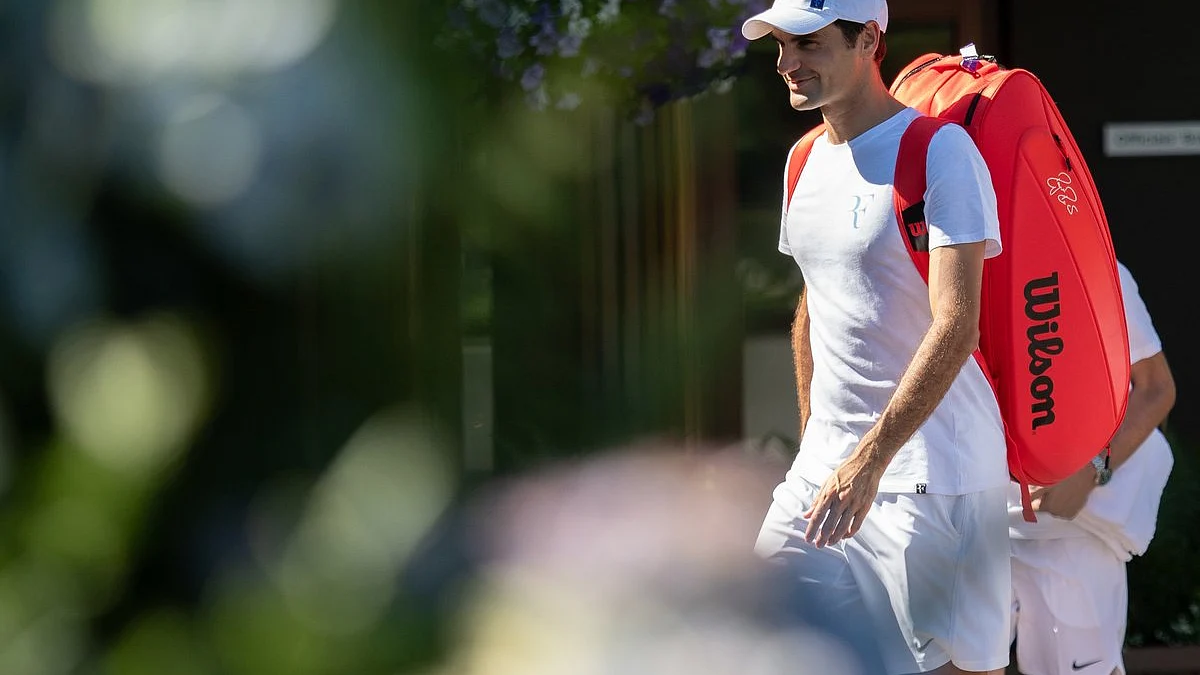Wimbledon: Federer drowns Nadal and possibly solidifies his GOAT status
Here are the numbers today, before the finals at Wimbledon on Sunday: Federer 20, Nadal 18 and Novak Djokovic looming close with 15

Federer defeating the younger Nadal in Wimbledon semi-finals on Friday, July 12 brought back memories of eleven years ago:
Wimbledon’s most remembered match came to an end with a young Rafael Nadal lying on his back, exhausted and undisputedly the best tennis player in the world, Roger Federer’s long run as title holder suddenly over.
This happened on a summer day 11 years ago.
At that moment of Nadal’s first Wimbledon title, ending Federer’s five win streak, Nadal’s first Wimbledon win came as a shock, but no one expected the beginning of a rivalry that would last till the present and possibly extend well into the future. Tennis players, in their 30s were considered to be in the brink of retirement, making way for younger players, as was traditional. No one saw another match with historic consequences between Nadal and Federer taking place at Wimbledon more than a decade later.
But Friday’s semi-final match, the first at Wimbledon since the 4-hour, 48-minute final in 2008, felt unusually important, specially when one stops to consider their possible retirement with the title of the ‘Greatest of all Time’ (GOAT).
Of course, there is more to this discourse than the total number of Grand Slams collected in their careers. Here’s the numbers today: Federer 20, Nadal 18 and Novak Djokovic looming close with 15.
Federer has some other significant records that the other two probably won’t come close to attaining anytime soon, however it will be difficult for him to maintain his consensus as the GOAT if he stumbles into the third position in the Slam count. At 37, he undoubtedly remains in top form on all surfaces, however it is well established and well known that Wimbledon’s grass provides Federer the best chance to increase his total.
Federer has never before beaten either Nadal or Djokovic to win a Grand Slam. Although Nadal is no longer in the running, the math starts working significantly in Federer’s favour considering Nadal’s age (33) and the fact that his knees seem to not be working well on hard surface courts. Failing to win this time however, will put his GOAT legacy at risk.
Federer would have ideally been in a more secure position had he chosen to retire at the end of 2017. Post his 2016 break, Federer stormed back unexpectedly to collect two more majors — including an Australian Open final in which he came back from a break down in the fifth set to stun Nadal.
That year, he beat Nadal four straight times, all on hard courts, closing the head-to-head gap to 23-15 in Nadal’s favour. It would have been a strong closing argument from Federer, particularly given the reality that 16 of their 39 meetings have been on clay, helping tilt the rivalry in Nadal’s direction. On other surfaces, Federer leads the head-to-head 13-10.
But by continuing to play and advance deep into these tournaments where he is likely to face Djokovic or Nadal, Federer put some of that at risk.
When Nadal beat him in the French Open semi-finals this year, Federer could once again point to the clay and strong winds. Federer has always found Nadal’s style problematic on clay but was impenetrable that day in those conditions.
On grass at Wimbledon, the ball stays lower, giving Federer an advantage because of his excellent serve placement, his slice backhand and his ability to power flat forehands for winners in either direction from the middle of the court.
But what’s so amazing about the Nadal-Federer rivalry, even with Nadal’s loss again Federer last night, is how both of them have evolved since 2008 and in a way, helped each other in the same.
Federer was forced to develop a totally new type of stroke on facing defeat against Nadal for years over his flamboyant style of playing. This new style played a crucial factor for Federer in their 2017 meetings.
Nadal has also changed his game to counteract both Federer and chronic knee issues, adding miles per hour to his serve and hitting some flatter balls on the faster surfaces to shorten points.
It seems crazy to say given their ages, but it’s true: Both Federer and Nadal are better, more complete players today than they were in 2008.
Their form and rivalry promised an entertaining match, and delivered on Friday. Djokovic’s entry into the finals was a much easier affair. But as lucky as we were, to get one more Federer-Nadal match at Wimbledon for the ceremony and the nostalgia, it’s also crucial to understand that this one might have huge legacy implications. As much as 2008 validated Nadal as a world-class player on all surfaces and launched his bid to eventually become No. 1, 2019 could be the match that either solidifies Federer’s gap in the GOAT conversation or nearly erases it.
With inputs from USA Today.
Follow us on: Facebook, Twitter, Google News, Instagram
Join our official telegram channel (@nationalherald) and stay updated with the latest headlines
